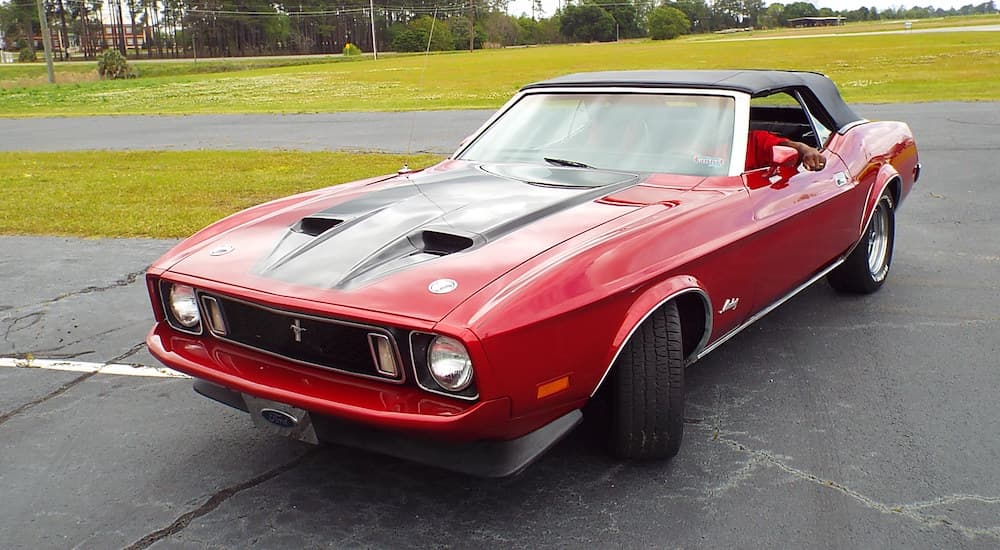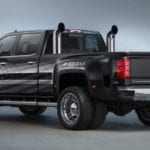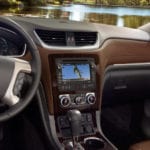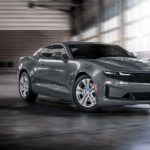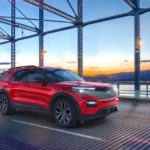Ford is always looking to the future when it comes to powertrains. The EcoBoost engine technology has really helped pave the way for fuel-efficient, powerful, low-emission alternatives to what used to power vehicles back in the day. Now Ford is going even further, changing the landscape of high-performance powertrains through the use of electric motors, attempting to entice enthusiasts and shoppers to visit a Ford dealership to buy electric vehicles. However, before Ford was known for adopting alternative propulsion methods, the brand was pushing the industry forward in a different way with performance-driven technology.
In fact, Ford was one of the pioneers of high-end muscle cars, and continued to push the envelope for many years on end with big-block V8s, gas-guzzling V10s, and even a few incredible V12s. Some of Ford’s rare performance-driven classics are now all but forgotten; they used to rule the raceways and roadways until the emission standards sidelined them. But there are a few cars worth heading back into the time machine to recount power and performance capabilities that many of you probably forgot about.
1- 1978 Ford LTD
The grand-daddy of the iconic Ford Crown Victoria, throughout the mid-1970s, Ford’s LTD Police Interceptors were some of the fastest on the roads. This was all thanks to a massive 460 cubic-inch V8 engine with a 3.85-inch crankshaft. The engine was known for outputting plenty of horsepower. However, the engine’s real performance capabilities weren’t initially realized when it was used in various full-size vehicles such as the Lincoln Continental and the F-series of trucks.
Placed in the more manageable Ford LTD Interceptor, the powerful V8 was allowed more room to breathe and utilize its displacement for achieving top-end speeds as one of the last of the big-block V8s from that era. The 1978 LTD Interceptor was the last of its kind before Ford switched over to more emissions-compliant designs, making it one of the meanest and most capable on the road, with the ability to reach speeds in excess of over 100 miles per hour. While it didn’t look quite as spiffy as some other performance-spec police cruisers that were making their way onto the roadways, the 1978 Ford LTD Interceptor was still quite a formidable opponent when it came to burning rubber and chasing down bad guys.
2- 1987 Sierra RS500 Cosworth
The Ford Focus and Fiesta may have taken the rally world by storm thanks to being lightweight, specially tuned subcompacts that packed a mean punch on the dirt tracks. But before everyone fell in love with Ken Block’s Ford Focus, there was another Ford that helped pave the way with some impressive rally feats. Turn the dial way back to 1987 and enter the world of Ford’s Sierra RS500 Cosworth. Only 500 of these cars were built, and they were all sold in the United Kingdom. It was somewhat of a pseudo-successor to Ford’s much beloved, very rare, and very powerful Group B rally darling, the RS200.
The Sierra RS500, however, was relegated to stricter rules since it was part of the tamer (if you can call any form of rally tame) Group A class. The interesting thing about the RS500 was that it was based on the RS Cosworth, which was already an impressive production machine that could hit 0 to 60 in 5.4 seconds and could top out at nearly 150 miles per hour. The Sierra RS500 was homologated for motorsports, producing 224 horsepower and 204 pound-feet of torque with its turbocharged and intercooled inline-4. It went on to win the 1988 Deutsche Tourenwagen Meisterschaft series, the 1988 Bathurst 1000, the 1988 Japanese Touring Car Championship, and countless other races and series, and it’s still quite a prized Ford if you can find a way to get your hands on one.
3- 1958 Mercury Monterey “Super Marauder”
Turning the time machine way back to the muscle car era when Ford’s Mercury brand was still going strong, the 1958 Ford Mercury Monterey “Super Marauder” was a one-of-a-kind. The “Super Marauder” moniker was only designated for use with the Monterey’s specially tuned 430-cubic inch big-block MEL V8 engine. A real mouthful, eh?
The “Super Marauder” wasn’t just a hokey name for a fancy muscle car iteration of a luxury town car. It was a fitting name for the triple-carburetor two-door cruiser, which was the first-ever factory car to achieve 400 horsepower. It is estimated that only 100 of the “Super Marauders” engines were produced, and it was discontinued after a single model year. So getting your hands on one from a dealership was quite a rare feat. The Mercury Monterey “Super Marauder” was both an exquisite example of the American enterprise aesthetic coupled with a massive push for performance-driven results. It was also one of the very few cases of beauty and brawn in a luxury package that came across as unassuming. But off the line, the Monterey “Super Marauder” was a real beast.
4- 1992 Ford Escort RS Cosworth
Two Cosworths on one list and no Ford GT90? Well, hold your horses. Ford has a lot of performance-driven classics, but possibly none quite as underrated as the 1992 Ford Escort RS Cosworth. While it’s still a Cosworth, the fact that it’s an Escort makes it stand out quite a bit more because most people in America don’t associate the Escort with high-performance capabilities at all. However, it’s a different story in Europe, where the Escort RS Cosworth and other performance variants were sold.
Designed as the successor to the Sierra RS500, the Ford Escort RS was originally conceived to be a competition vehicle. But since it was destined for World Rally Champions Group A, that meant it had to be homologated for racing with production road vehicles made available for the general public. So now imagine that Ford had an Escort RS designed specifically for racing but available to the general public. Crazy, right?
Well, the production edition of the 1992 Ford Escort RS was quite a beast, coming in at just under 3,000 pounds, featuring a whale-tail spoiler in the rear, and equipped with four-wheel drive. A 2.0L turbocharged engine could output 224 horsepower and 220 pound-feet of torque, with a max speed of up to 146 miles per hour. The beefed-up racing edition of the Ford Escort would go on to win various races and secure a formidable legacy ahead of its successor that came in the form of the rally-tuned Ford Focus.
5- 1973 Ford Falcon XB GT
All right, so you probably do remember this car, and it’s probably not something you have to be reminded about, but how could this car not be at the top of the list? This is probably one of the most popular classic performance-oriented Fords ever made that isn’t a Mustang. The Ford Falcon is already quite an iconic name when it comes to muscle cars, thanks to the Falcon XY GT that was featured in the 1982 Ozploitation film, Running on Empty, as well as the 1970 Ford Falcon XA GT, which had its successor cut short due to government regulations. However, there’s only one Ford Falcon that gets heads to turn, hearts to race, and eyes to flutter like no other, and that’s the 1973 Ford Falcon XB GT.
Why is this particular Falcon so popular, and why is it hailed as one of the “last of the V8s”? Because the 1973 Ford Falcon XB 500 was featured in the iconic 1979 dystopian thriller Mad Max as one of the Main Force Patrol vehicles that were used by Mel Gibson’s “Mad Max” Rockatansky. The other Ford Falcon used in the film, the XB GT, was actually heavily modified and turned into the black-on-black (gloss on matte black) Pursuit Special, better known to most fans as the Mad Max “Interceptor.”
Despite its fictional legacy, the Falcon XB’s actual legacy as a muscle car is nothing to scoff at. The 1973 Falcon XB GT looked every bit as cool as it was powerful, with a 351-cubic inch Cleveland small-block engine tucked inside an absolutely menacing hood. This bad boy fired eight cylinders and produced up to 300 horsepower. The Ford Falcon XB GT really was the epitome of the last of its kind and the end of an era. Unfortunately, this performance icon was only sold in Australia, and few American drivers have ever had the chance to experience its full glory in person.
